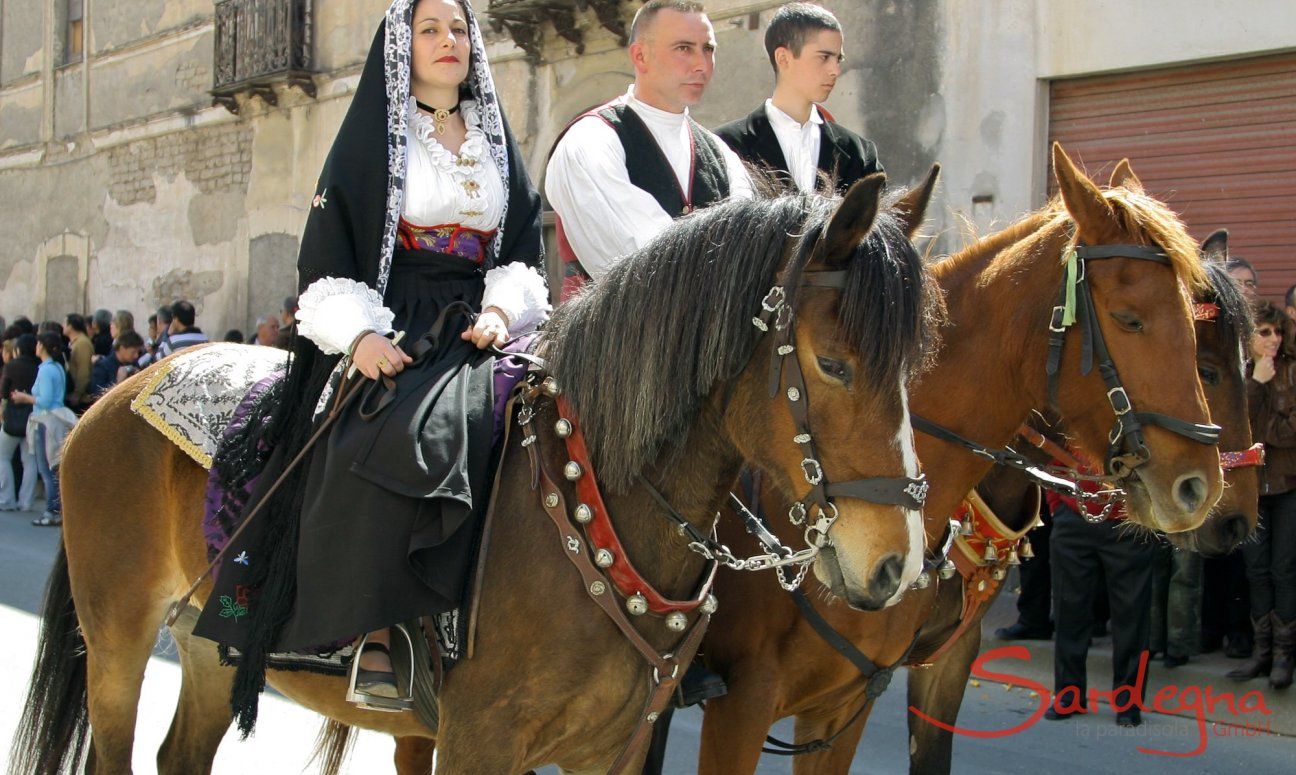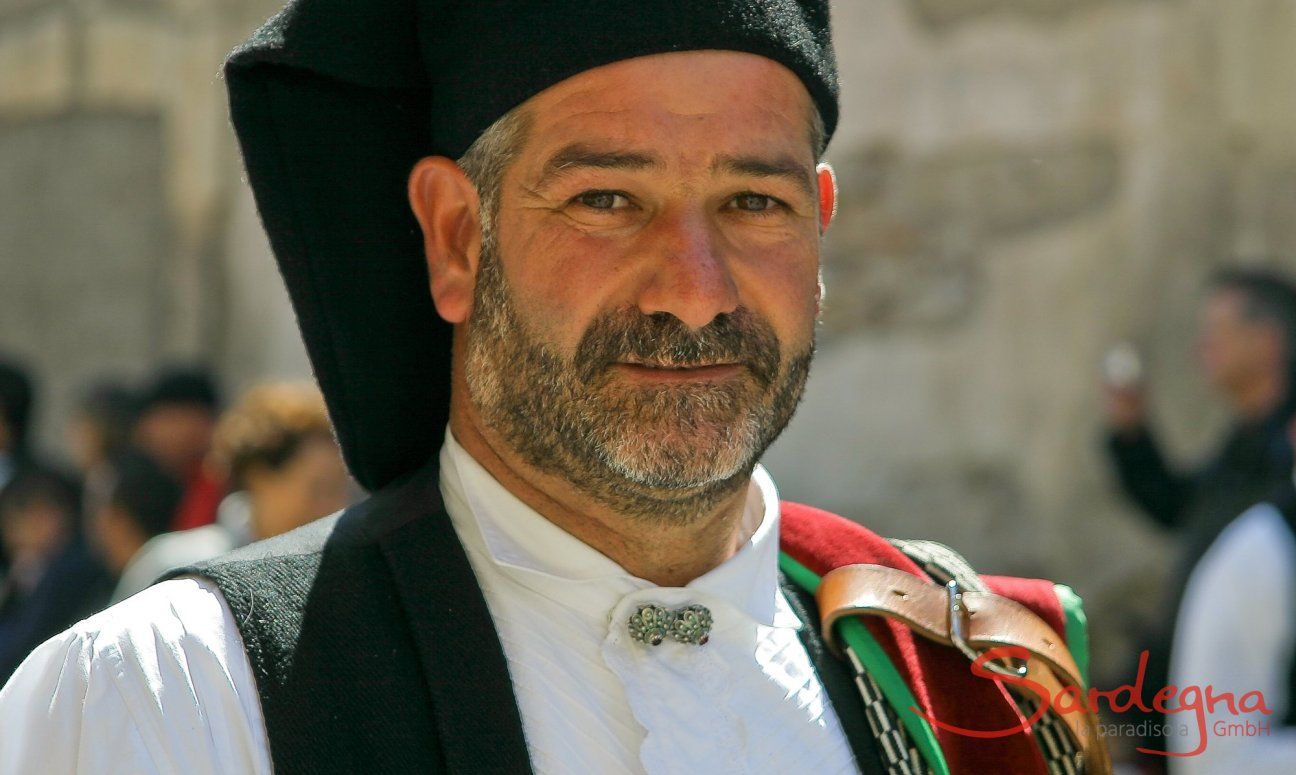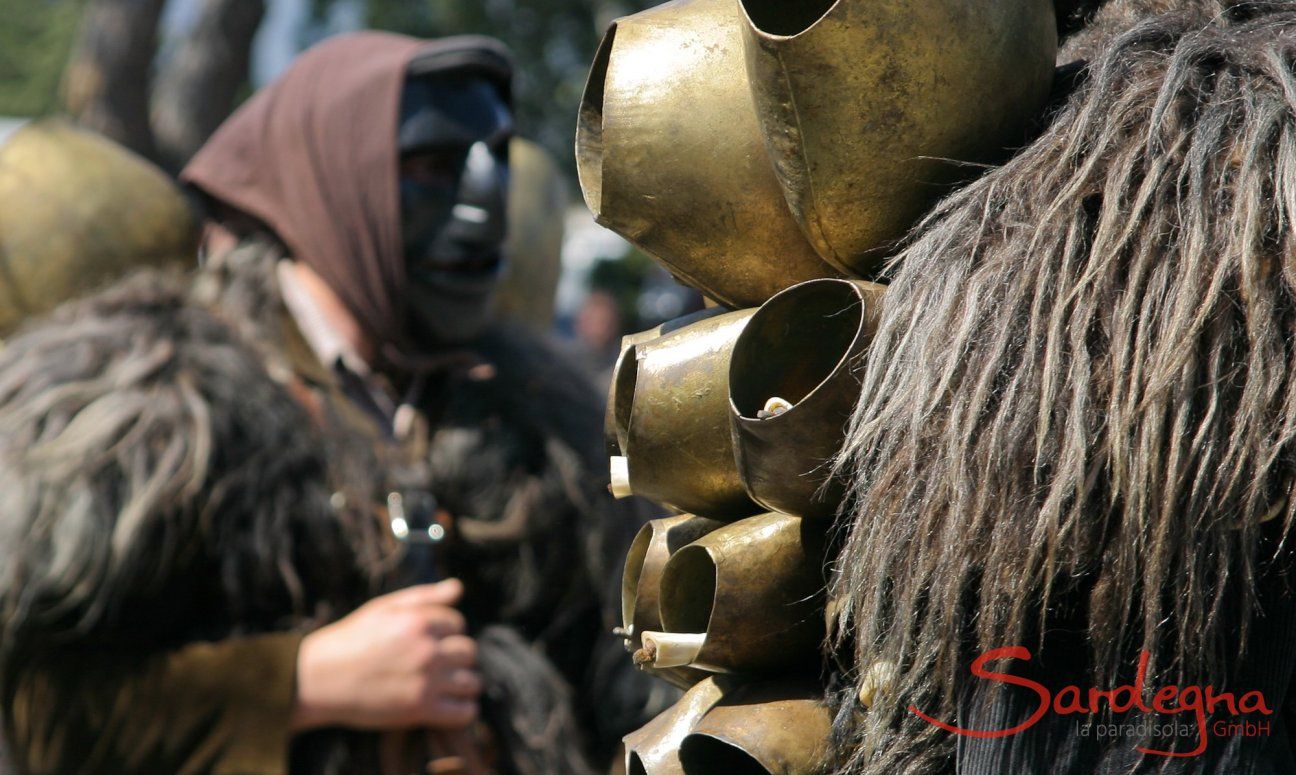
Traditional Costumes
Sardinia’s traditional costumes reflect the deep-rooted history of the sunny island. With colourful, high-quality fabrics and artistic embroidery, they are much more than mere clothing - they are a symbol of cultures, origin and religiosity and are worn at traditional festivals.
Details
Sardinia’s costumes: artful dress steeped in tradition
Sardinia’s traditional costumes reflect the deep-rooted history of the sunny island. With colourful, high-quality fabrics and artistic embroidery, they are much more than mere clothing – they are a symbol of cultures, origin and religiosity and are worn at traditional festivals.The Sardinian costumes are vibrantly colourful, adorned with rich embroidery and precious jewellery with strong Spanish and Moorish influences. Within the closed island community, the costumes were not only a symbol of local origin, but also of the wearer’s status. Donning the traditional dress and jewellery continues to be an integral part of every Sardinian festival, serving as a an expression of pride and confidence. Almost every major town has its own traditional costumes, and there are more than 400 different models throughout Sardinia.
Despite differing in the details, the costumes do have common features. Women wear a veil, hood or scarf with long, pleated skirts and embroidered aprons, whilst men always wear the same: a birritta, or Sardinian cap, teamed with a skirt-like doublet and black hand-woven cuffs made of unscoured wool on the legs.
Many costumes have remained in the original, rustic style. During the sagre, the typical Sardinian folk festivals commemorating the saints, visitors can still admire them today. The Nuoro Folklore Museum on Sant'Onofrio hill also exhibits a selection of traditional costumes.



